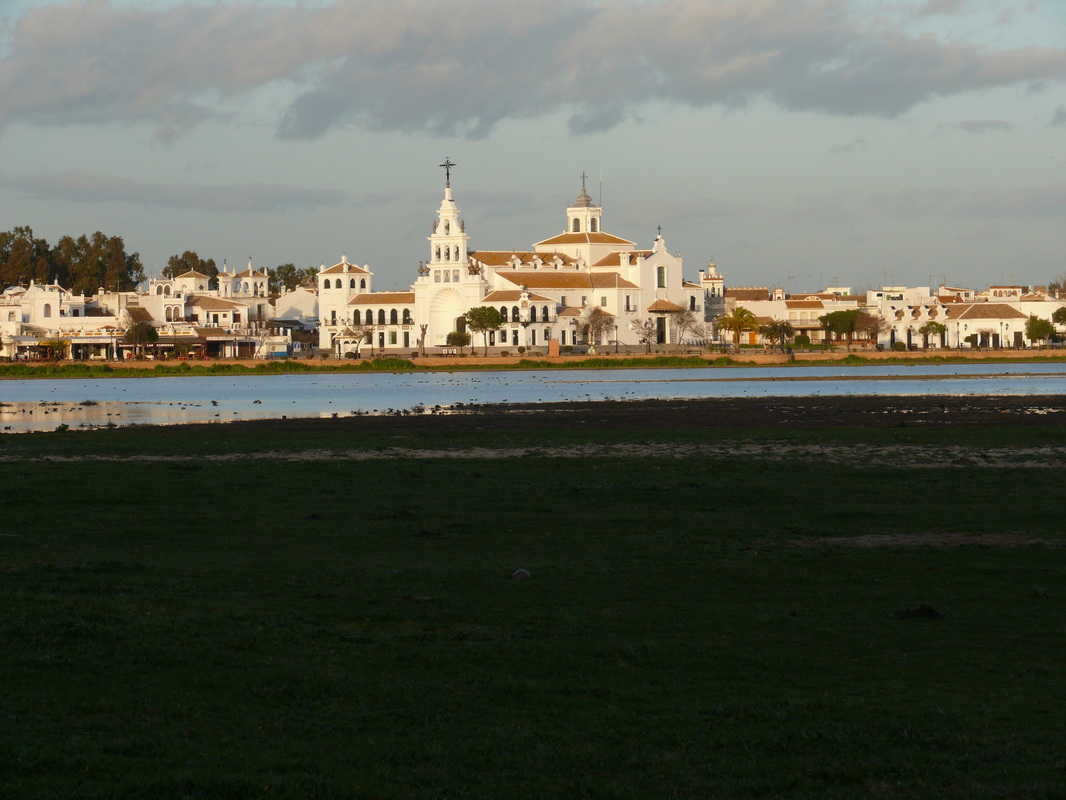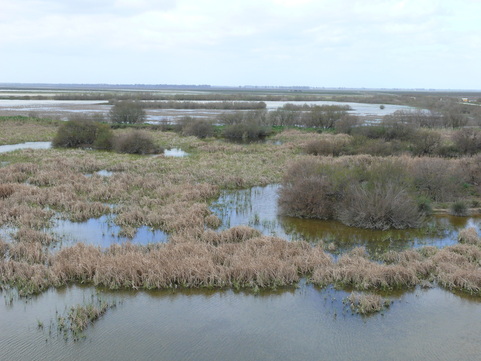 El Rocío photo: Laurence Rose
El Rocío photo: Laurence Rose The main point of the talk will be to illustrate the value of EU-level cooperation, supported by EU law, in conserving Europe’s most precious places. This in the face of an onslaught by the UK Government, the new EU Commission and other short-term interests who are committed to watering down the protection afforded by current legislation.
It’s a subject I covered earlier this year in an episode of BBC Radio 4’s Costing the Earth, which you can hear by clicking the button:
 Laurence Rose
Laurence Rose Back then, Doñana, indeed all Spain, was reeling from the country’s worst environmental catastrophe. A reservoir containing highly toxic mining waste had collapsed, spilling 5 million cubic metres of lead, arsenic and cadmium-laden mud and acid water. A tsunami of poison flowed into the River Guadiamar, one of the main sources of water for the marshes of Doñana, which lay some 45 kilometres downstream.
En route, the wave of mud and acid killed everything in the river, and spread over 4,500 hectares of farmland, which will never again produce food. It flooded some of the most important bird habitat, killing all aquatic life and contaminating soils. Plants absorbed the heavy metals, becoming toxic to anything that fed on them.
The full story, and its aftermath, is related in Costing the Earth. What proved to be a short-term disaster had its silver lining. With considerable EU financial support, the pollution was cleaned up. The contaminated farmland was allowed to rewild and has become a green corridor linking Doñana with the Sierra Morena to the north, and hopefully, one day reuniting the fragmented Iberian lynx population.
On Saturday, I will touch only briefly on the other Doñana: the Doñana of music, dance and pilgrimage. So this is my chance to celebrate the cradle of flamenco; and how fitting that this is also the Spanish name for one of Doñana’s great symbols, the flamingo.
Etymologists cannot agree on whether the bird was named after the gypsy dances recalled in its strutting, head-and-wing flicking display; or the other way round. What is in no doubt, is that the marshes of Doñana and the surrounding provinces of Huelva, Seville and Cádiz, is where flamenco and flamencos are most at home.
During my thirty-odd visits to Doñana, over the last 25 years, I have been unable to disentangle my sense of the landscape, its smells, its sounds, its birds, its coarseness, its rhythms, natural and otherwise, its troubles and its blessings. Nor, in the lyrics to the Fandangos de Huelva, the Sevillanas, the Soleás and all the other Andalucian song styles, does any such separation exist.
For this reason, re-reading my birdwatching notebooks covering a quarter century of visits, is to smell the tang of eucalyptus and to hear the insistent clapping – palmas - of flamenco:
Walking back to the hotel...
and half-asleep coots in the black marshes
and clapping.... clapping....
| | The many forms of flamenco are distinguished by the combination of rhythm and metre known as the palos. Just as important these days are the other influences. Thousands of commercially-oriented pop-influenced flamenco songs have been released. At their most extreme, these eliminate the microtonal inflections essential to authentic cante jondo (deep song). They often introduce cheesy string sections, not to mention electric bass and drums. Los Marismeños is a band whose name means the marshmen, and who sing about Doñana and its famous annual pilgrimage. They are at the commercial end of the scale but not horrifically so. Here they sing Huelva, Donde el Fandango ha Nacio: Huelva, birthplace of fandango. |
| For a taste of the atmosphere in El Rocío during the Pentecost pilgrimage, here is a brief clip in which we hear a spontaneous Sevillana - a typical flamenco palos form you are as likely to hear in the street as in the concert hall. And below, a field-and-studio remix. In these Sevillanas marismeñas - Sevillanas of the marshes, the electric bass is there, but so are those microtones. The modern touches are respectful, and the uniquely expressive melody lines undulate like the dunes of Doñana against an Andalucian sunset. | |
 RSS Feed
RSS Feed
